
views
Getting the Sacred Area Ready

Set up a small table to use for the ceremony. Find an open, uncluttered area of your home to arrange a small table or nightstand, which serves as the platform for the abhishekam ritual. You can cover the table with a special cloth or covering, or leave it bare. The table doesn’t need to be large, but it should be able to fit your lingam, as well as any offerings.
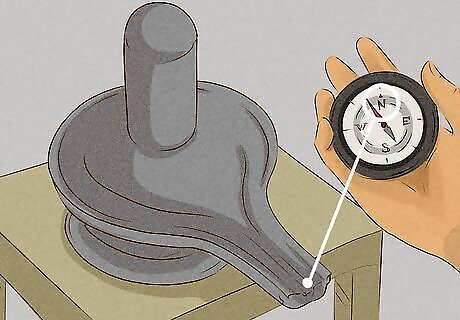
Arrange your lingam on your table with the yoni facing north. The lingam itself is a cylinder, which sometimes rests on a yoni, or a rounded disc. Use a compass to figure out which direction is north in your home, then rotate the yoni to point in that direction.
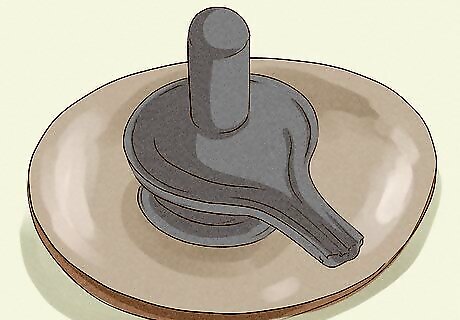
Put a draining plate beneath the lingam. If your lingam is small, lift and center it in the middle of a large plate. Make sure that the relic is still turned in the proper direction, with the yoni portion facing north. Larger lingams may use the yoni as a draining plate. Use whatever setup is best for your own home and religious needs.
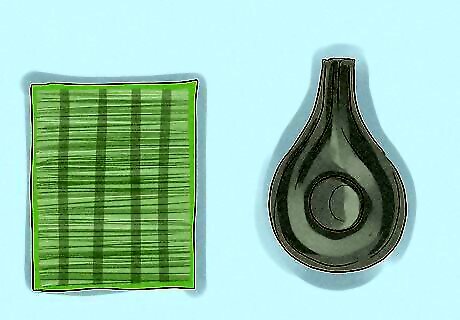
Place a Kusha on the ground so you can face the west side of your lingam. Take a special Kusha, or cushion, and set it on the ground next to the west-facing side of the lingam. As you perform the ceremony, you want to be physically turned to the east (facing the west-facing side of the lingam).
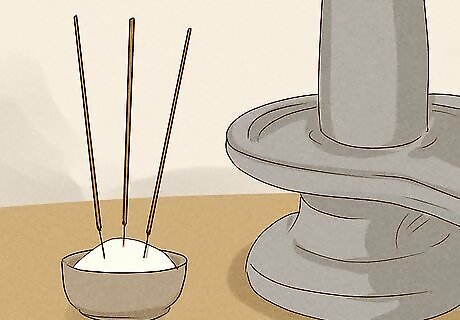
Set incense, an achamani pot, and any offerings on the table. Collect the supplies that you'll use for Shiva Abhishekam, like incense sticks, camphor, aromatic oil, a pot filled with sacred water, and the milk, curd, honey, and sugarcane juice that you plan on using to bathe the lingam. Arrange the incense sticks on the table, and keep the other ingredients close by for the ceremony. Some practitioners use different ingredients when performing Shiva Abhishekam. Use whichever items you feel most comfortable with!Did you know? For this ceremony, it’s best to use purified water, or water mixed with gangajal. Speak with a member of your local temple to see how you can obtain this special water.

Sprinkle water over yourself and the items while saying a protective chant. Take a spoonful of water from the pot and pour it over your head and shoulders. Additionally, sprinkle some sacred water over the offerings and items you plan on using throughout the Shiva Abhishekam ceremony. At this time, say a chant to sanctify the area. One chant you can say is, “Om Apavitrah Pavitro Va Sara Vastan Gatopi Va Yah Smaret Pundari Kaksham Sa Bahya Bhyantarah Shuch," which means “May all things unholy become holy, may all lower tendencies depart, just as soon as we transcend may within and without be purified.”

Praise the Guru, your parents, Shiva, and Lord Ganesha. Take a moment to offer respect by saying a specific mantra. This chant helps set the tone for the ceremony. You can say something like, “Om Gurubhyo Namaha; Om Ganeshaya Namaha; Om Kula Devatabhyo Namaha; Om Ishta Devatabhyo Namaha; Om Mata Pitribhyam Namasha," which means, “I bow to guru, I bow to Ganesha, I bow to the family deity, I bow to my personal deity, I bow to my parents.”

Sip water while chanting mantras. Say 3 specific mantras before you start the ritual bathing part of the ceremony. After saying each mantra, take a sip of purified water. To drink this water, pour a small spoonful into your hand and pour it into your mouth. You can say, “Om Keshavaya Namaha; Om Narayana Namaha; O Madhavaya Namaha.” These mantras offer respect during the ceremony.
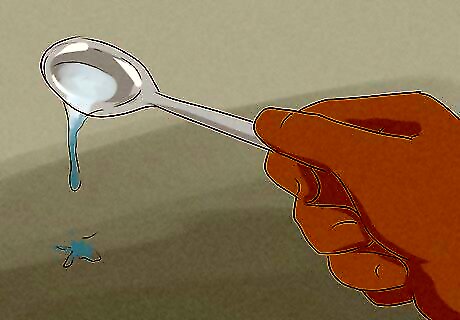
Pour water onto the ground while saying a chant. Take a spoonful of water and spill it on the ground to the right of where you’re sitting. As you do this, recite a respectful mantra. Say, “Om Govindaya Namaha,” which offers respect. You can also spill the water into your right hand if you don’t want to pour it on the ground.
Offering Elements and Chants
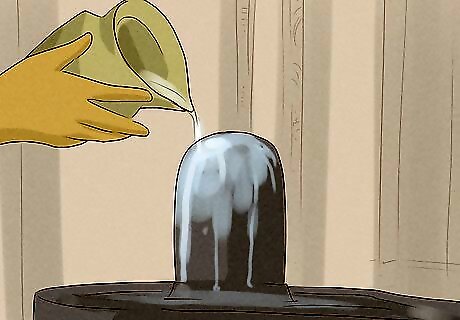
Spill water over the top of your lingam and chant. Take a pitcher of regular water and pour it over the surface of the lingam. Continue pouring until you’ve completely covered the relic. At this time, recite the mantra “Om Namah Shivaya.” Translated, this means “Adoration to Lord Shiva.” Consider the size of your draining plate as you perform the ritual, as you’ll be pouring different ingredients over your lingam.
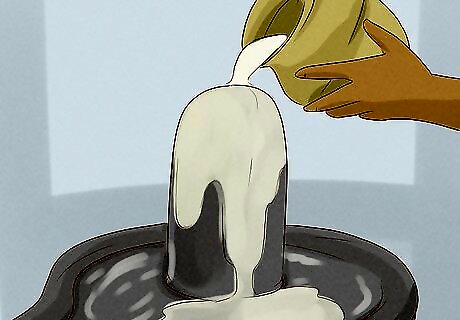
Pour milk on top of the water while chanting. Take a pitcher or bowl of unboiled milk and spill it over the top of the lingam. Keep pouring until the relic is completely bathed. During this time, say a special chant about the milk you’re pouring. A common chant for this part of the ceremony is, “Om kamadhenu samurai panam sarva samtosa karakam payastubhyam pracacami snanartham pratigrh yatam om sri shiva namah payah snanam samarpayami," which means “We offer milk for your bath from Kamadhenu, the wish-fulfilling cow, which will bring you all kinds of joys in life, O Shiva please accept this milk.” Don’t wash off the lingam between ingredients—abhishekam is a continuous ritual.
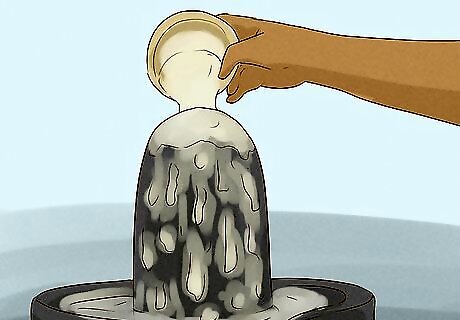
Cover your lingam with Dahi, or curd. Take a bowl of curd, or thick yogurt, and pour it over the surface of the lingam. This may not cover the relic as smoothly as the milk or water, so just do your best. As you cover the relic, chant “Om Namah Shivaya.”

Add honey on top of the curd while saying a chant. Pour a bowl or container of honey on top of the curd. You may need a lot to cover the entire relic. Since honey is a bit thicker, it may take a little longer to cover the surface of your lingam. While you pour, offer a special chant. A typical chant for this offering is, “Om divyaih puspaih samud bhutam sarvaguna samanvitam madhuram madhu na madhyam snartham pratigrh-yatam om sri Shiva namah madhu snanam samarpayami," which means “We offer this honey for your bath, which has been extracted from divine flowers. It has great medicinal qualities and is full of sweetness. O Shiva please accept this honey.”
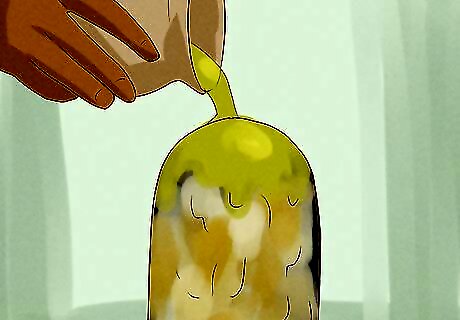
Pour sugarcane juice over your lingam. Cover the entire surface of the relic, going over the honey, curd, milk, and water that you already poured. Keep spilling the sugarcane juice until your lingam is completely coated. You can also use coconut water instead of sugarcane juice, if necessary.
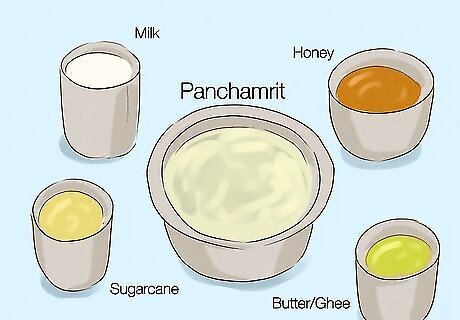
Spill Panchamrit over the lingam. Mix equal parts of unboiled milk, honey, ghee (butter), curd, and sugar together in a bowl to make a panchamrit, a sacred mixture for the ceremony. Pour the panchamrit over the lingam to completely bathe it. As you do this, chant “Om Namah Shivaya.”
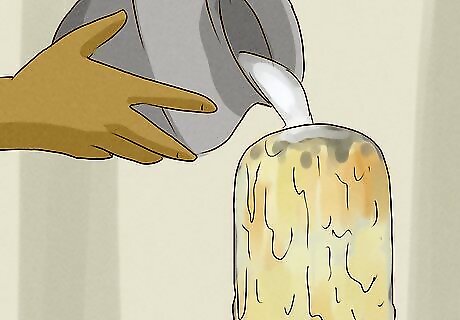
Wash your lingam with water. Finish the bathing process by spilling water over the other ingredients. Keep pouring until the surface of the lingam is clean.
Finishing the Ceremony

Dry off your lingam with a clean towel. Wipe down the lingam so it’s completely clean and dry. At this point, you don’t need to worry about cleaning or dumping out the contents of the draining plate.
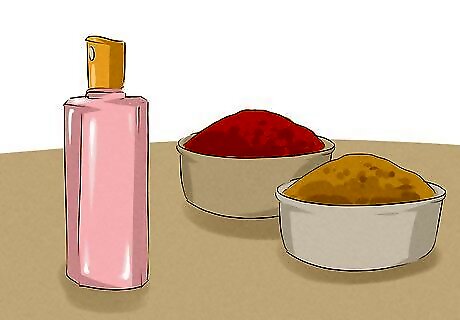
Cover the lingam with perfume, chandan, and kumkum paste. Take a spoonful of chandan and pour it over the clean lingam. Repeat this process with a spoonful of kumkum paste. You can also sprinkle or spritz your lingam with perfume at this time. Follow whatever traditions you’re most comfortable and familiar with! Check online or visit a marketplace or temple to find the ingredients and perfume you need for this process. Chandan is another name for sandalwood. Kumkum is a red, powdery paste.
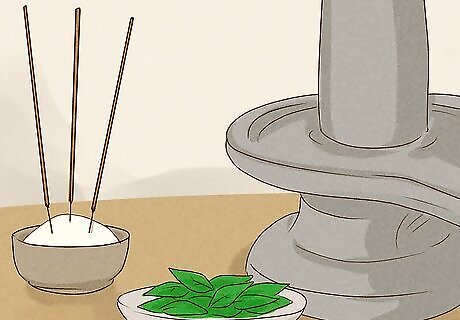
Place any additional offerings on the table and pray. Arrange bilva leaves on the table, along with any special incense. At this point, you can offer any last prayers or chants to finish the ceremony. You can purchase bilva leaves online.



















Comments
0 comment